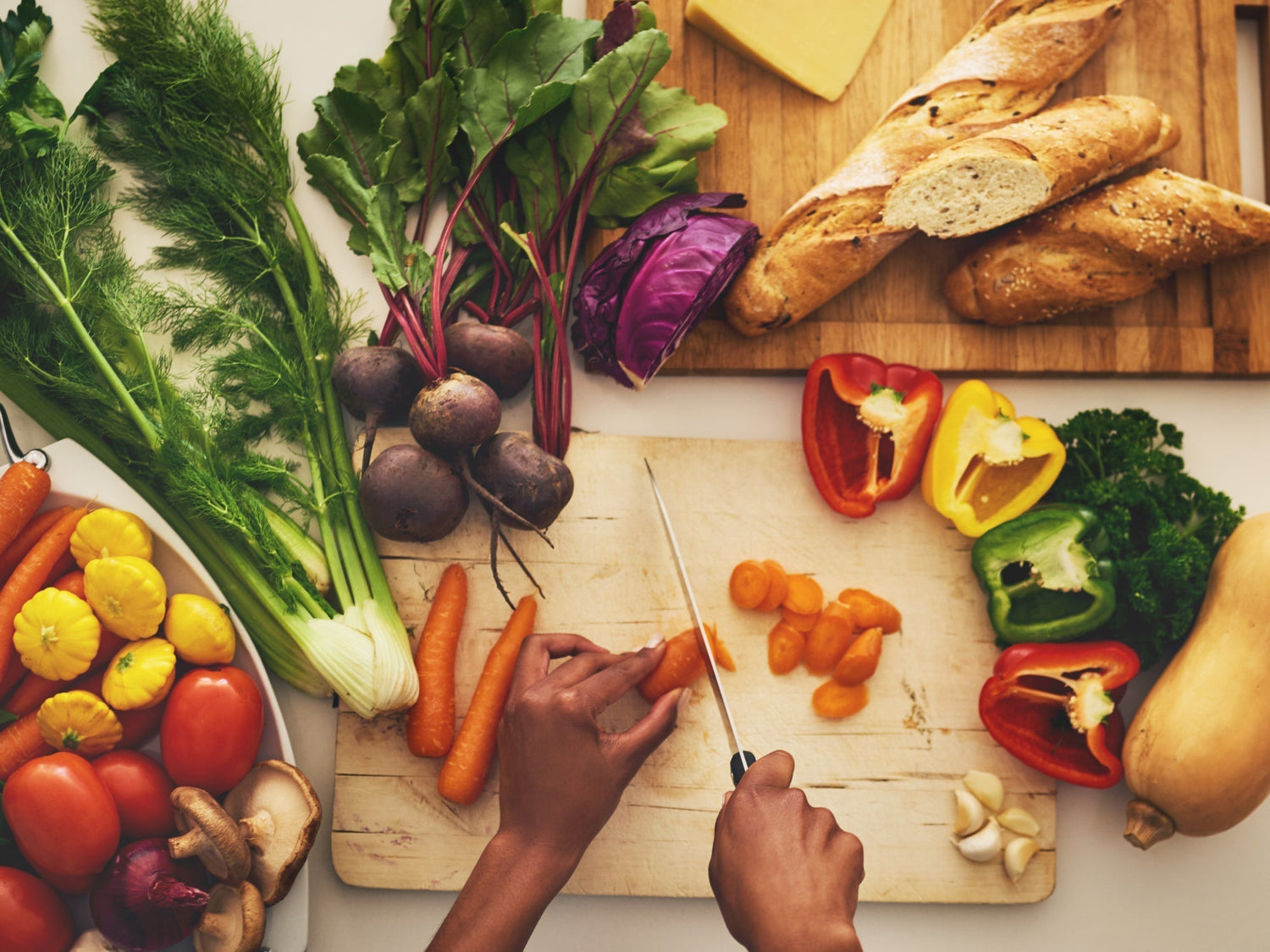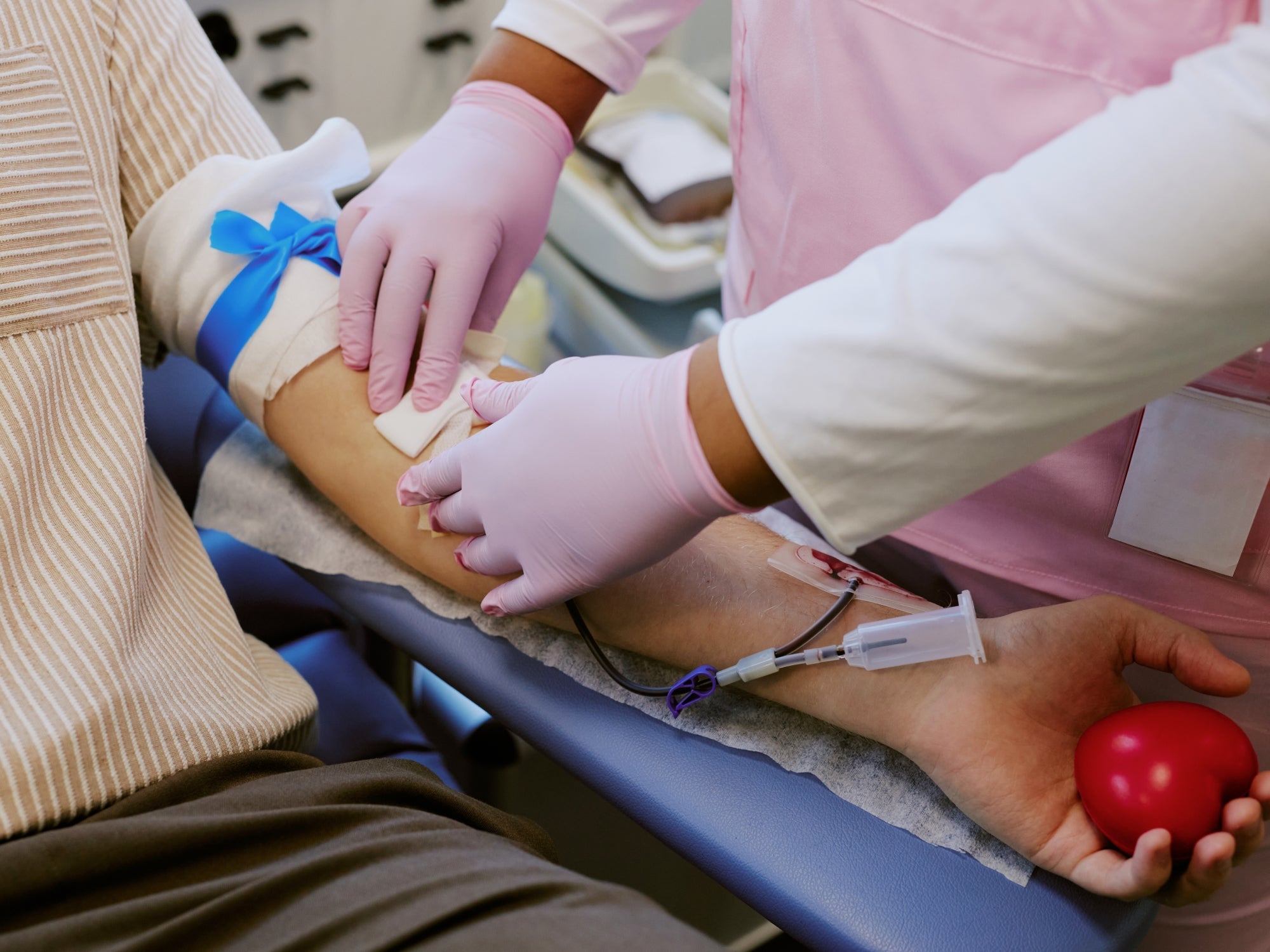Your alarm wakes you at 6:30 AM. You rush to get ready, grabbing a sugary pastry and coffee on your way out the door. By lunchtime, you're famished and opt for a fast-food burger and fries. The afternoon energy crash hits, so you reach for a candy bar from the vending machine. Dinner is takeout and eaten late while scrolling through social media. Without realizing it, each of these choices impacts not just your energy levels, but something vital flowing through your veins—your blood.
As the adage says, “You are what you eat.” But what we eat also profoundly shapes our blood health, affecting everything from red blood cell production to blood pressure. And while one unhealthy meal won't significantly harm you, a pattern of nutritional choices tells a story over time, either supporting blood health or gradually undermining it.
In this latest installment of our Blood Health series, we'll explore the crucial relationship between nutrition and blood health. We’ll present two versions of the same busy day to show how food choices impact this vital system.
Blood Health Basics: Why It Matters
Blood is essential to life, carrying oxygen and crucial nutrients to every cell in your body. Far more than just a red fluid, your blood performs five critical functions:
-
Carries oxygen and nutrients to all your organs and tissues
-
Controls bleeding through platelets and clotting factors
-
Fights infections by transporting immune cells and antibodies
-
Cleanses the body by carrying waste products to the kidneys and liver
-
Regulates body temperature by distributing heat throughout your body
When your blood health suffers, every system in your body feels the effects—from reduced energy and cognitive function to compromised immunity and cardiovascular health.
The Nutrition-Blood Connection
The food you eat directly impacts your blood composition and function. Three key nutrients play particularly vital roles in blood health:
Iron: The Oxygen Carrier
Nearly 70% of your body's iron exists in hemoglobin within red blood cells. Iron is essential for producing hemoglobin, which transports oxygen from your lungs to tissues throughout your body. Without sufficient iron, you risk developing iron deficiency anemia, characterized by fatigue, weakness, pale skin, and shortness of breath.
Women of childbearing age need approximately 18mg of iron daily, while men and postmenopausal women require about 8mg [1].
Folic Acid: The Cell Builder
Folic acid supports the formation of red blood cells and is crucial for DNA synthesis and cell division. Deficiency increases your risk of anemia and can cause serious birth defects during pregnancy.
Adults should aim for 400 micrograms (mcg) daily, with pregnant women needing 800 mcg [1]. Leafy greens, beans, citrus fruits, and fortified grains provide excellent natural sources.
Vitamin B12: The Nerve Protector
This vital nutrient supports red blood cell production and protects your nervous system by helping form myelin, the protective covering around nerves. Long-term B12 deficiency can lead to nerve damage and has been linked to depression.
Adults should consume 2.4 micrograms daily, primarily from animal products like meat, fish, eggs, and dairy [1]. Plant-based eaters should consider fortified foods or supplements.
A Tale of Two Days: How Nutrition Choices Impact Blood Health
Day One: The Blood Health Strain
Morning: Sarah wakes up late and rushes out the door, grabbing a chocolate-filled pastry and a large double-caramel latte. This high-sugar breakfast causes her blood glucose to spike, then crash by mid-morning. The refined carbohydrates provide little iron or the B vitamins needed for healthy red blood cell production.
Lunch: With back-to-back meetings, Sarah grabs fast food—a burrito, chips with guac, and soda. This meal delivers excess sodium (potentially raising blood pressure), trans fats (which can increase LDL cholesterol), and few of the nutrients her blood needs.
Afternoon: Feeling sluggish, Sarah reaches for a peanut-butter energy bar and another coffee. The temporary energy boost masks symptoms of poor blood circulation and nutritional gaps.
Dinner: Exhausted, she orders greasy takeout at 8 PM and eats while working late. This high-sodium, high-fat meal may increase blood viscosity and impair healthy blood flow.
Over time, these patterns can lead to anemia, elevated blood pressure, poor circulation, and increased risk of cardiovascular disease [2].
Day Two: Supporting Blood Health
Morning: Sarah prepares overnight oats with chia seeds, berries, and a sprinkle of nuts the night before. This breakfast provides iron, fiber, antioxidants, and healthy fats to support blood cell production and healthy circulation.
Lunch: She brings a mason jar salad with dark leafy greens, beans, colorful vegetables, and grilled chicken—packed with iron, folate, and B vitamins essential for red blood cell formation.
Afternoon: Instead of candy, Sarah has prepared a small container of mixed nuts and dried fruits, which provide sustained energy and minerals like potassium and magnesium that help regulate blood pressure.
Dinner: Using pre-chopped vegetables and pre-marinated protein prepared on the weekend, she quickly assembles a balanced meal by 7 PM, allowing her body time to digest before sleep. For dessert, she enjoys frozen berries with a dollop of yogurt, providing additional nutrients that support blood health.
Same busy schedule, vastly different impact on blood health.
Practical Tips for Blood-Healthy Eating
Supporting blood health doesn't require a radical lifestyle overhaul. Small, sustainable changes can make a significant difference:
Preparation is key: Use weekend time to prepare ingredients for the week ahead. Wash and chop vegetables, cook grains, marinate proteins, and assemble grab-and-go breakfasts like overnight oats.
Strategic shopping: Stock up on frozen berries, pre-chopped vegetables, canned beans (rinsed to reduce sodium), and quick-cooking whole grains to make healthy meals accessible even on busy days.
Iron-boosting habits: To enhance absorption, consume vitamin C-rich foods alongside plant-based iron sources. For example, add bell peppers to your bean salad or drink orange juice with your fortified breakfast cereal.
Read labels: Become familiar with the sodium content in packaged foods and choose low-sodium options when available. Season food with herbs and spices instead of salt.
Mindful eating: Even when busy, try sitting down and focusing on your meal. No screens or devices, just the food in front of you. This practice aids digestion and helps you tune into hunger and fullness cues, preventing overeating.
Monitoring Your Blood Health
Modern technology makes monitoring blood health easier than ever. The Ruby app allows you to estimate your likelihood of iron deficiency or iron deficiency anemia simply by taking a fingernail selfie. Using the same technology, you can also track your circulation.
Regular health check-ups that include blood work help catch potential issues before they become serious problems. Remember that early detection and consistent healthy habits are your best tools for maintaining optimal blood health.
Conclusion
Your blood health doesn't depend on perfection—it's about consistent patterns of nourishing choices. By understanding the vital connection between nutrition and blood health, you can make informed decisions that support this essential system.
Whether you focus on iron-rich foods or simply start preparing more meals at home, each positive choice contributes to healthier blood and, by extension, a healthier you.
Share this article with friends and family who might benefit from understanding this crucial health connection. Download Ruby today and take the first step toward better nutrition and blood health.
Click here to download the app via the iOS or Android app stores.
References
[1] Center for Functional Health. "Nutrition for Healthy Blood." https://cfch.com.sg/nutrition-for-healthy-blood/
[2] Clifton PM, Keogh JB. "A systematic review of the effect of dietary saturated and polyunsaturated fat on heart disease." https://pmc.ncbi.nlm.nih.gov/articles/PMC5671956/





Leave a comment
This site is protected by hCaptcha and the hCaptcha Privacy Policy and Terms of Service apply.